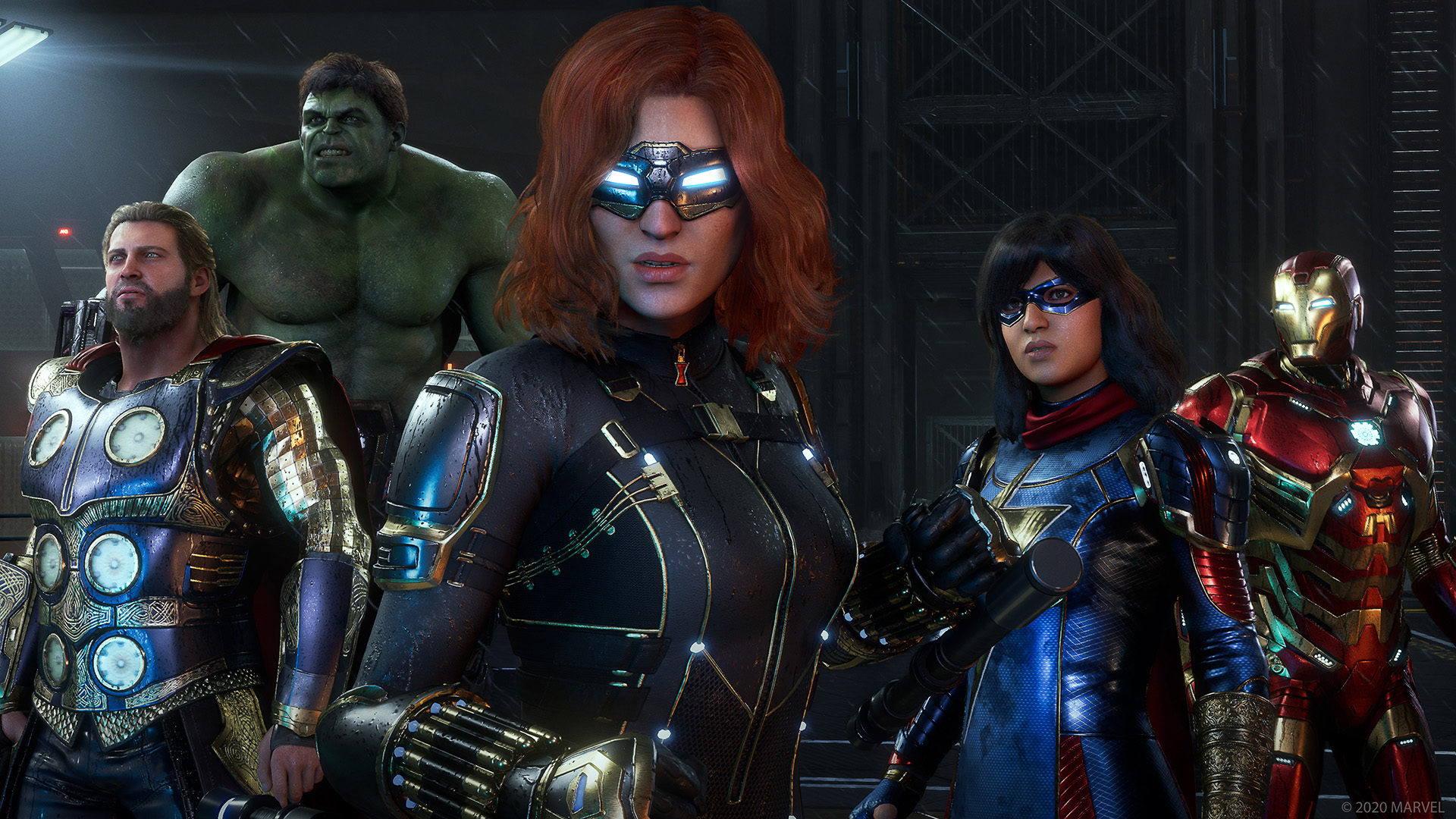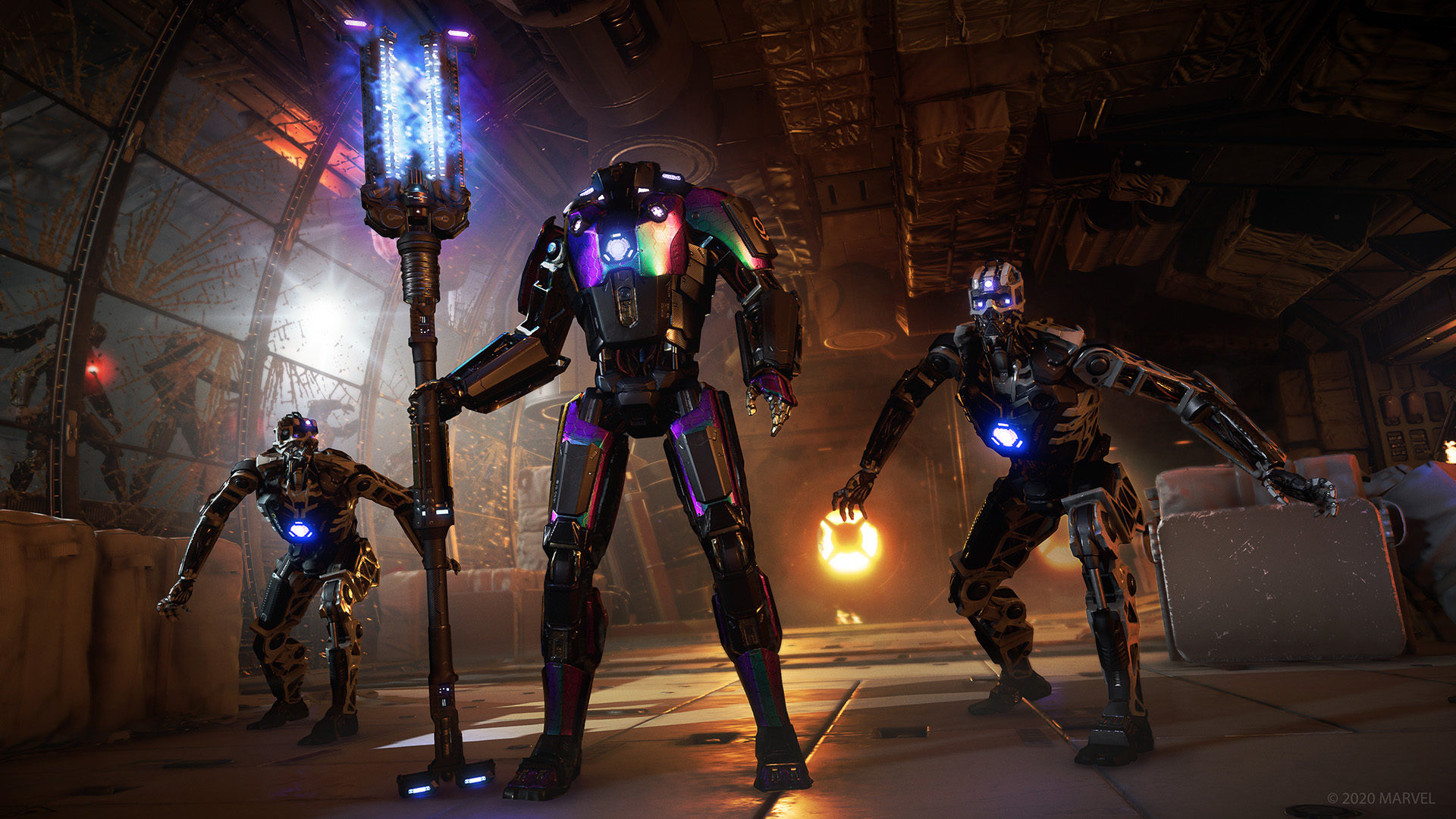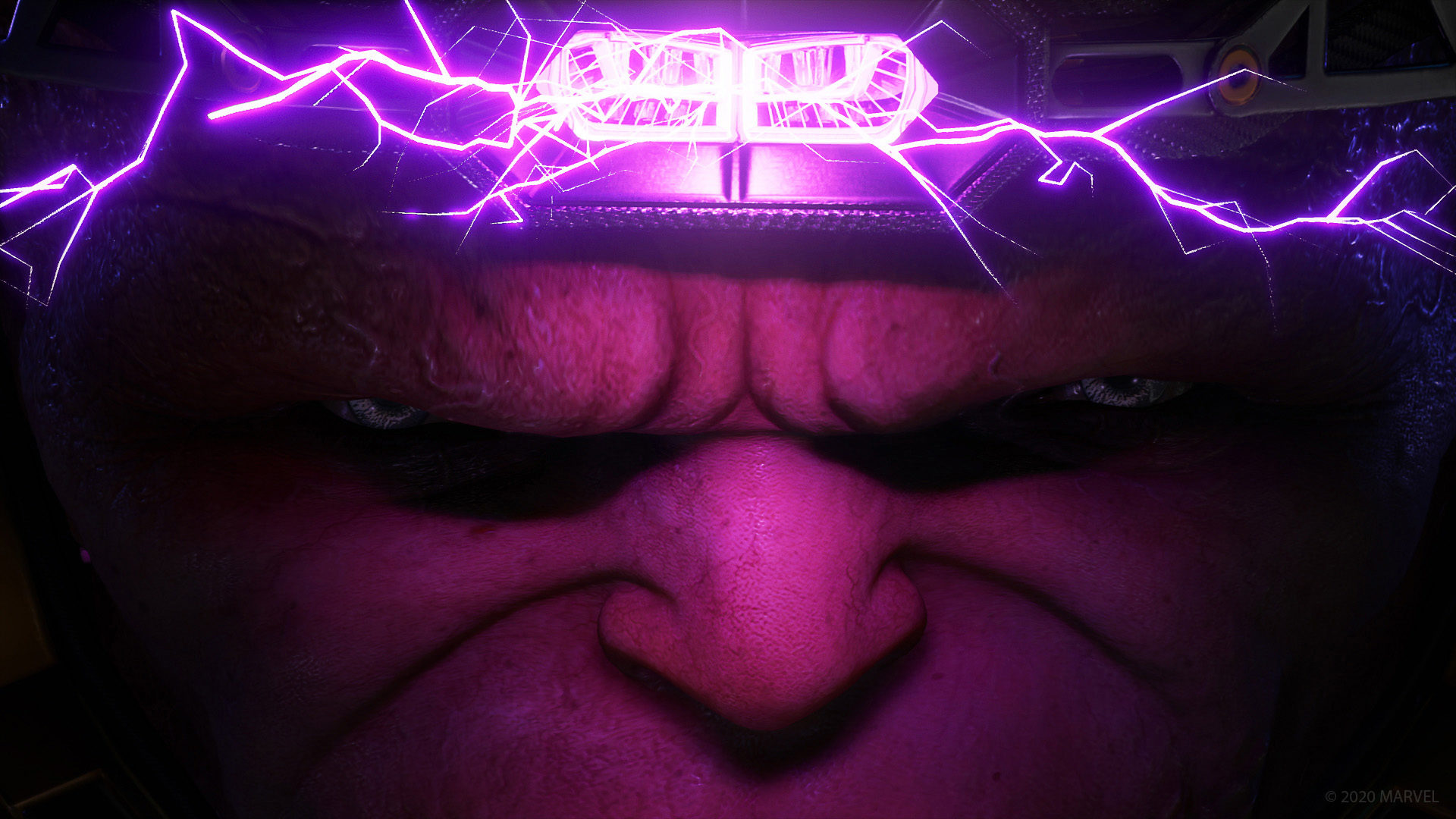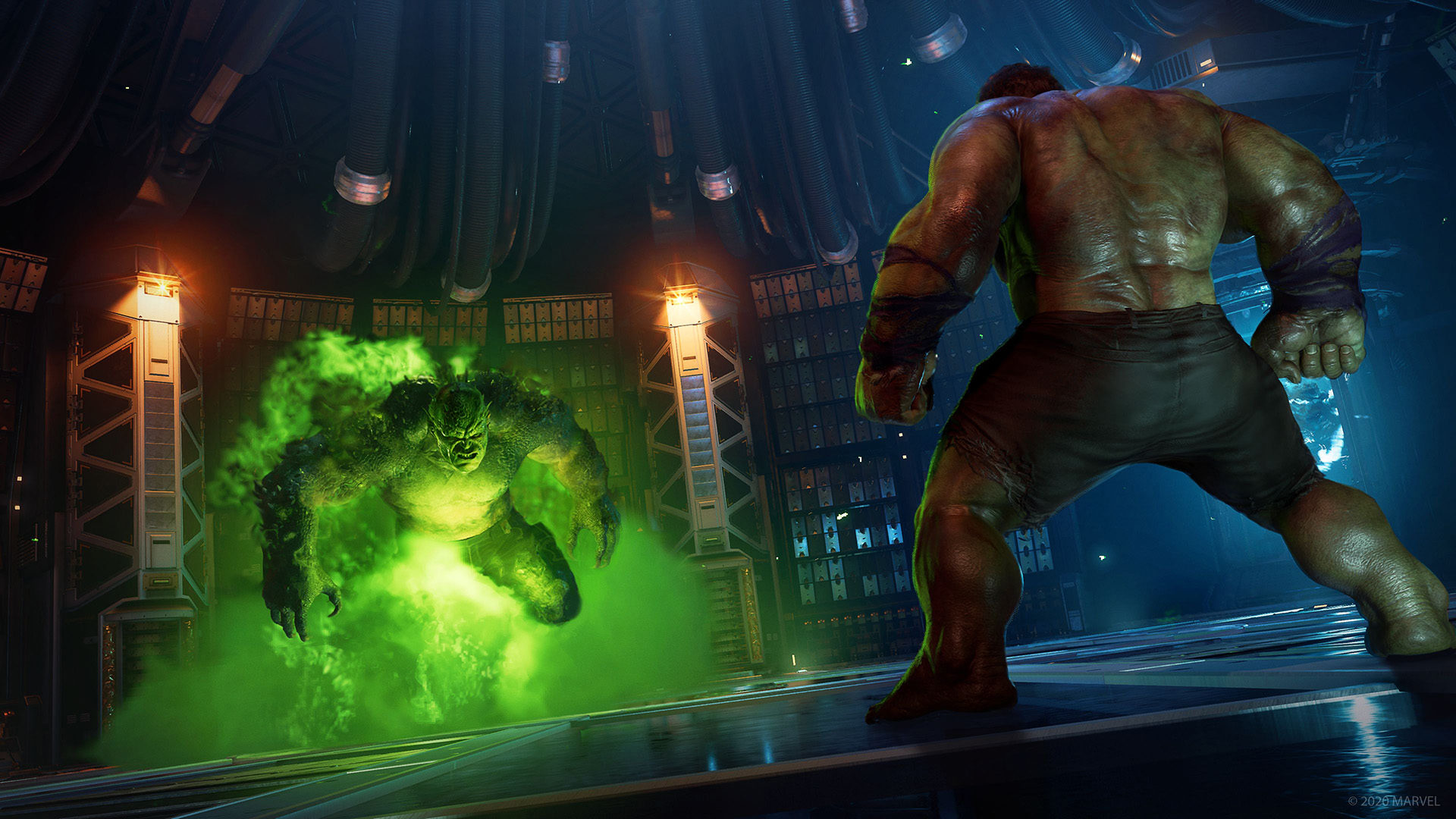Fittingly enough, Marvel’s Avengers translates both the best and worst of comic books into game form.
Though I’d never purport to be a diehard fan or expert, I’ve read comics on and off since I was a kid. I loved exploring the characters and worlds, mainlining the imagination of creators and artists from action-packed splash pages straight into my brain. Heroes weren’t just paragons of virtue, but complicated figures with surprising depth and emotion.
But the thing that ultimately kept me from converting into a Real Comics Person™ was the nagging sense that I wasn’t actually reading stories in the traditional sense. Stories end. Comic book stories, by virtue of the medium and the business, continue on forever, layering more and more complexity, stretching and distorting characters and ideas past their limits until the inevitable cancellation or continuity reboot.
When you first boot into Marvel’s Avengers, you’re firmly in the territory of that first part, all the stuff I love about comics. The campaign, which offers a surprisingly meaty experience, focuses on a simple, usually well-told story with a real human core. After an apocalyptic incident in San Francisco destroys the city and imbues average people who carry the Inhuman gene with superpowers, the government forces the Avengers to disband. Five years later, an Inhuman girl named Kamala Khan—soon to become Ms. Marvel—sets out to reassemble the Avengers to save the day from a new threat, a megacorporation called AIM that seeks to wipe the Inhumans off the face of the Earth.
As you journey through the campaign, you get to meet and play as multiple heroes. There’s Kamala, with her power to stretch and enlarge her body, along with the familiar lineup that I’ll assume needs no introduction: Thor, Captain America, Iron Man, Hulk, and Black Widow. Each hero each feels both distinct and, for the most part, true to their abilities from the comics and movies. In both writing and gameplay, the goofy, optimistic Kamala is a definite standout. Iron Man, by contrast, is a bit of a letdown. But they’re all decent, and the mostly linear single-player levels make good use of each character’s combat design to build engaging encounters with a few memorable moments. If this is all there was to the Marvel’s Avengers, you’d be reading a very different review.

Are there issues, sure? The game is admittedly a little rough around the edges. It crashed probably a dozen times throughout my playthrough, and twice I was forced to restart from a checkpoint after enemies I had to defeat to progress spawned on the other side of a door where I couldn’t reach them. Once the game glitched out and started looping the same half-second of audio for a few minutes, after which everything was silent for the remainder of the mission. And the missions in the campaign can be a bit uneven—the more open, sandbox-style chapters feel like obvious filler, lacking the handcrafted care of the story’s bigger moments. In particular, they rely heavily on simple, repetitive objectives like standing in glowing shapes on the ground while a meter fills up. As I said in my earlier preview, these would be fine as game modes in a competitive multiplayer game. In single-player or co-op, however, they don’t really do much for me.
But where Marvel’s Avengers truly falters is in aping the thing I hate about comics: This is a game that wants to go on forever. I’m talking, in case you haven’t been following the prelaunch coverage, about the games-as-a-service component, called Avengers Initiative, that you’re funneled into after beating the story. While there is some loose narrative backing—and even a few cutscenes—linking this material together, it’s mostly a matter of repeating the same missions over and over to level up your heroes and earn better gear. Unlike the campaign, all of this content is available to play in co-op, but given the focus on those sandbox levels, it’s also much less compelling.
Being forced to replay content, in my case, made me actually realize how many underlying gameplay and design issues the campaign’s story razzle-dazzles into the background. For instance, if the game is designed around co-op, why is it so hard to strategize and communicate in these open levels? There’s no ping system like Apex Legends, and it’s hard to keep track of where other players are at any given moment. Even if you use a microphone, side objectives are only given question mark icons until you get very close, so you’re forced to organize your group by calling out the rough distance and direction of each objective you want to explore. In a linear game, you’d be able to get by. In a game with these open levels, it’s extremely half-baked design.

Plus, the simple act of getting around the sandbox levels is universally dull and drawn out. You’re either leaping forward in tiny, decidedly un-super jumps—especially out of character for the Hulk—or you’re flying around absurdly slowly. There’s no fun in traversal, so it becomes dead space in gameplay, another thing to endure.
Even the once-fun combat becomes a chore when you’re forced to do it so often. The lack of depth starts to grate, and at high levels success becomes much more about managing your abilities and cooldowns than it does actual twitch skill or reading your opponents. Given that gear is much more reliably rewarded from chests and completing missions than random drops from enemies, I eventually started just running past fights. On a transactional level, they weren’t worth the time or effort.
After you’ve completed all the mission chains and watched the final cutscene, this repetitive grindwork is all there is to keep you invested. It’s what you’ve been working towards all this time. And the endgame underlying it is just simply not enjoyable enough to sustain itself long-term.
I don’t want to get too far into the weeds here, but here’s the basic gist of progression: First, there’s an XP-based level progression, with skill points and ability tries. This is all fine and standard, and you never feel bogged down waiting for new things to unlock. On top of this, there’s a Power Level for each hero, determined by the gear you have equipped. For most of the game, you simply equip higher level gear as it drops randomly, in chests around the maps, or as rewards for completing missions. The gear levels appear to be randomized to be somewhere from slightly higher to slightly lower than what you’ve currently dropped. Plus, you can spend resources you’ve collected to bump up the power level up to 10 more times, with loot in higher rarity tiers offering more potential upgrades.
All this changes, however, once you get to around level 130. No gear drops above that number, and any upgrade past 130 now requires a special resource called Upgrade Modules. While it’s frustrating that you literally need hundreds of Modules to fully upgrade all your gear, there are at least a few guaranteed ways to earn them. I actually found I could make progress quickly by starting a mission, racing over to a chest I knew had Modules, and then quitting out to restart. That’s obviously not the intent of the designers, but it smoothed out the grind enough that I was able to mindlessly chip away at a good pace.

But once all your gear is at 140, things get worse still. The only way to actually get a hero to the max level cap of 150 is by upgrading one of the handful of Major Artifacts you’re awarded throughout the game. And to do that, you need an even rarer resource, Polychoron, which you can only get by finishing mission chains (which can’t be repeated for the same rewards, and will therefore eventually run out), or by accomplishing daily objectives handed out by the game’s two factions. These only refresh every 24 hours, so eventually you reach a hard cap in how much you’re allowed to earn—around 16 per day, as best as I can tell. To get my Major Artifact—and therefore my Kamala Khan, currently stuck at level 149—up to max level, I need 60 more Polychoron. That means it’ll take multiple days of waiting behind an artificial time gate to make the only real progress I still can with this hero.
Even more annoying is the fact that, while any Major Artifact you unlock is shared between all heroes, the upgrades you give it are not. If I want to get another hero to 150, I’ll need to do this Polychoron grind all over again, time gates and all. In fact, it’ll take me much longer on future heroes, since I’ve already spent all the rewards from completing mission chains. Unless I’m missing something major, there’s no way to leverage progress on one hero or piece of gear to speed up the progress on another. Heck, if I decide I want to swap out a single, already leveled piece of gear, I’m going back to the Upgrade Module grind. I feel locked into choices I made days ago because it’s so inconvenient to try out anything new. I’ve actually earned a few Major Artifacts, but given the dozens and dozens of Polychoron I’ve already poured into the first one I unlocked, I’m too demoralized to start over. I’ll never actually know if they’re a better fit for how I play. I hate that I feel beaten down and discouraged from experimentation. I’m not building the hero I want to. I’m building the one that’s the path of least resistance in the face of hostile design.
This whole process is so annoying that I actually broke one of my personal rules: I spent $50 on in-game currency, just to skip a bunch of levels on different heroes’ battle pass–style “Character Cards” to get the Polychoron rewards nestled in there. Even that wasn’t enough.
What makes the entire exercise feel extra pointless and artificial is that you’re not being meaningfully rewarded. Because almost every activity in the game scales enemies’ levels up with yours, you never really feel like you’re getting more powerful. If anything, fights at higher power levels seem to take more time, not less. What good is doing 15,000 damage per hit if your foes now have hundreds of thousands, or even millions, of hit points. That’s not a game. That’s a treadmill.

Listen, I get that the endless grind is part of the appeal of games like this, and there are moments when I see the allure, even in Avengers. Ultimately, though, it’s just far too extreme. In a game where you’d realistically only want to level a single character, this exact design approach might be acceptable. But this is a game with six different heroes at launch, and more planned to arrive in quick succession as the game continues. If I don’t continue playing it like a full-time job, I’m never going to keep up. As a result, I don’t want to keep up.
There are plenty of games I would be happy to play and replay forever, but that’s because those games are innately fun and varied in their gameplay loops, not because designers and in-game economists and moneymen from the publishers have all worked together to give me an infinite checklist designed to maximize engagement statistics and per-player spend on cosmetics. Even if the monetization isn’t aggressive yet, and even if all the new heroes and content coming down the pike is admirably free, many aspects of Marvel’s Avengers still just feel… icky. There’s something deeply, unavoidably cynical about a game that never ends, that uses all the “best” design tricks the industry has learned from mobile, free-to-play, and MMO games to hook its players for an indefinite commitment that keeps mastery and completion forever out of reach.
Some of these problems, I should be clear, aren’t unique to Avengers. These worrying design traits are cropping up everywhere, no doubt in response to ballooning development costs and unsustainable player expectations. Still, the mismatch feels particularly extreme in a game about heroes, one whose central theme is that being good is meaningless unless you do good. Marvel’s Avengers, judged on the values expressed through its design, seems to believe that simply not being outright evil is enough. Good luck telling that story forever.
All images: Square Enix, Marvel.
|
★★☆☆☆
Marvel’s Avengers squanders the potential of what might have been a fun superhero romp by grafting on an annoying, overly repetitive games-as-a-service component. Playing as the cast of heroes offers decent thrills, and the campaign tells an enjoyable enough story, but odds are good you’ll get bored long before you grind your way to the top. |
Developer Crystal Dynamics, Eidos Montreal Publisher Square Enix ESRB T - Teen Release Date 09.04.2020 |
| Marvel’s Avengers is available on PlayStation 4, Xbox One, PC, and Google Stadia. Primary version played was for PS4 Pro. Product was provided by Square Enix for the benefit of this coverage. EGM reviews on a scale of one to five stars. | |
